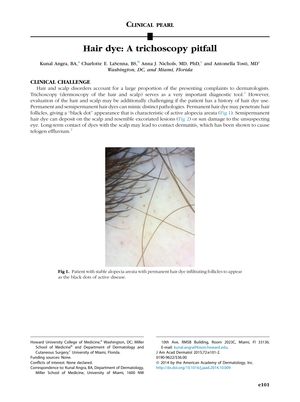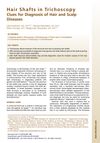Hair Dye: A Trichoscopy Pitfall
March 2015
in “
Journal of The American Academy of Dermatology
”

TLDR Hair dye can make it hard to diagnose scalp conditions correctly.
The document highlights the challenges that hair dye presents in trichoscopy, a diagnostic tool for hair and scalp disorders. Permanent hair dye can infiltrate hair follicles and mimic the "black dot" appearance of active alopecia areata, while semipermanent hair dye can deposit on the scalp and resemble excoriated lesions or sun damage. Additionally, long-term contact with scalp dyes may cause contact dermatitis, leading to telogen effluvium. To avoid misdiagnosis, it is crucial for dermatologists to inquire about a patient's hair dye use and understand how different dyes can affect the scalp. Patients should be advised to wash their scalp thoroughly after coloring to prevent dye deposits from interfering with diagnosis and treatment.




